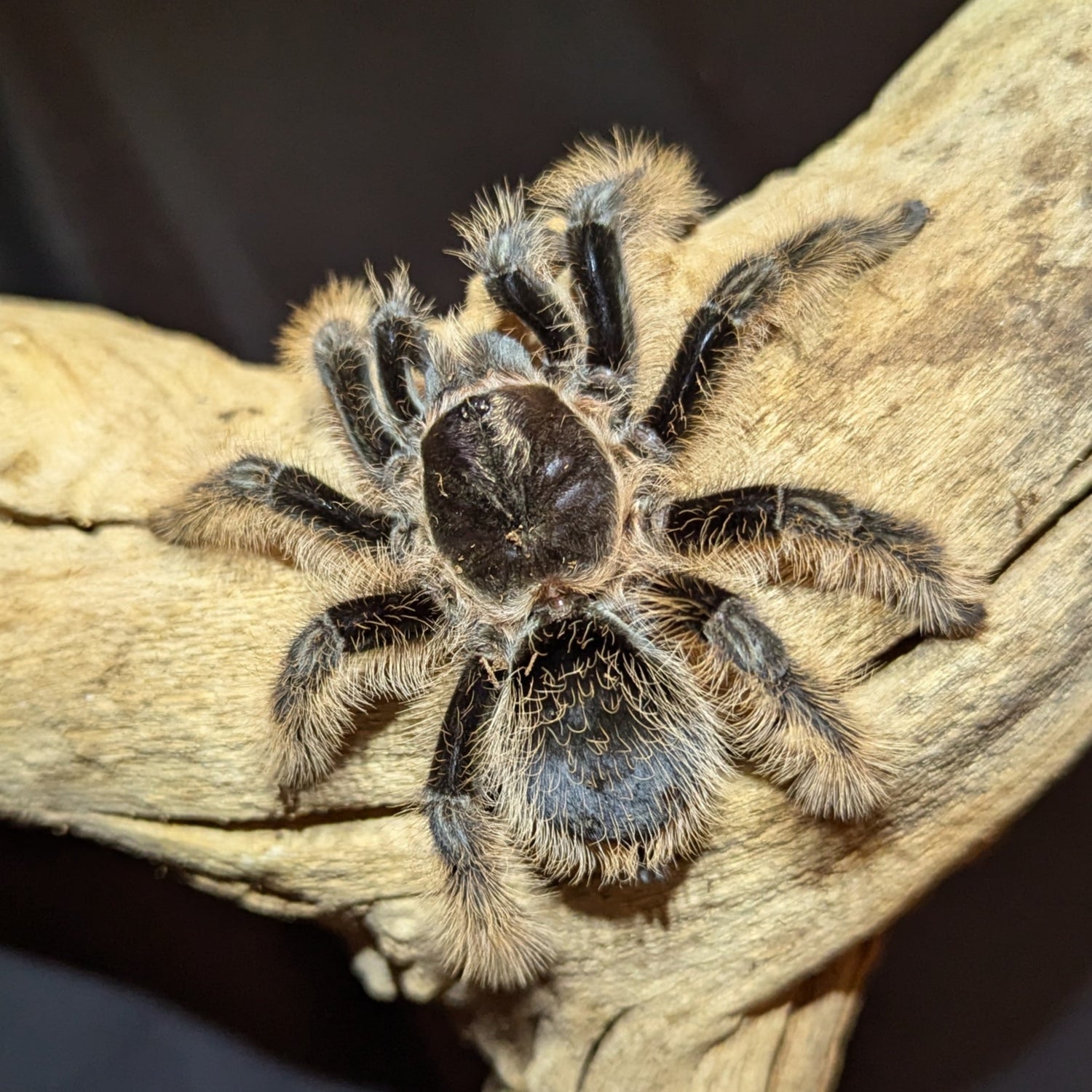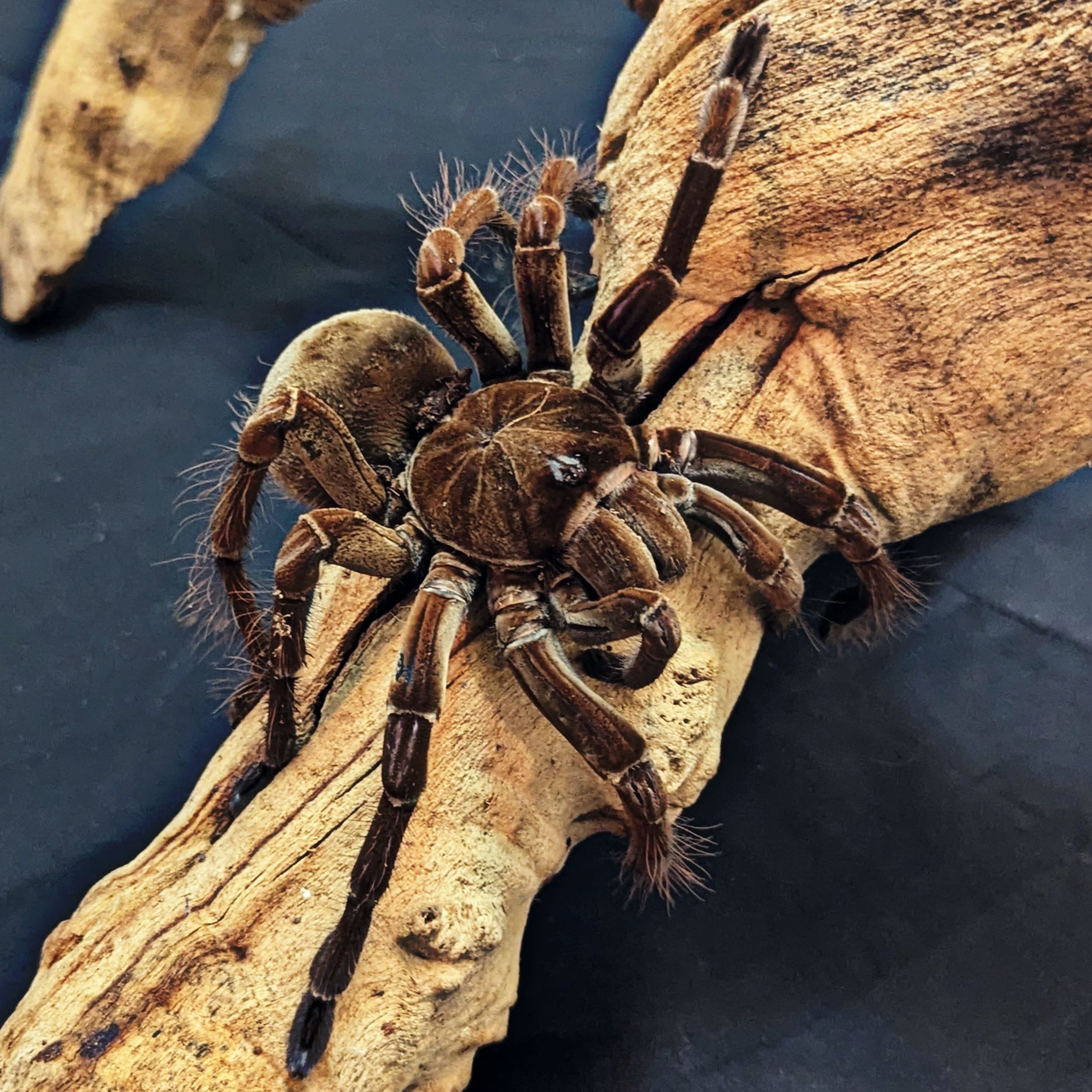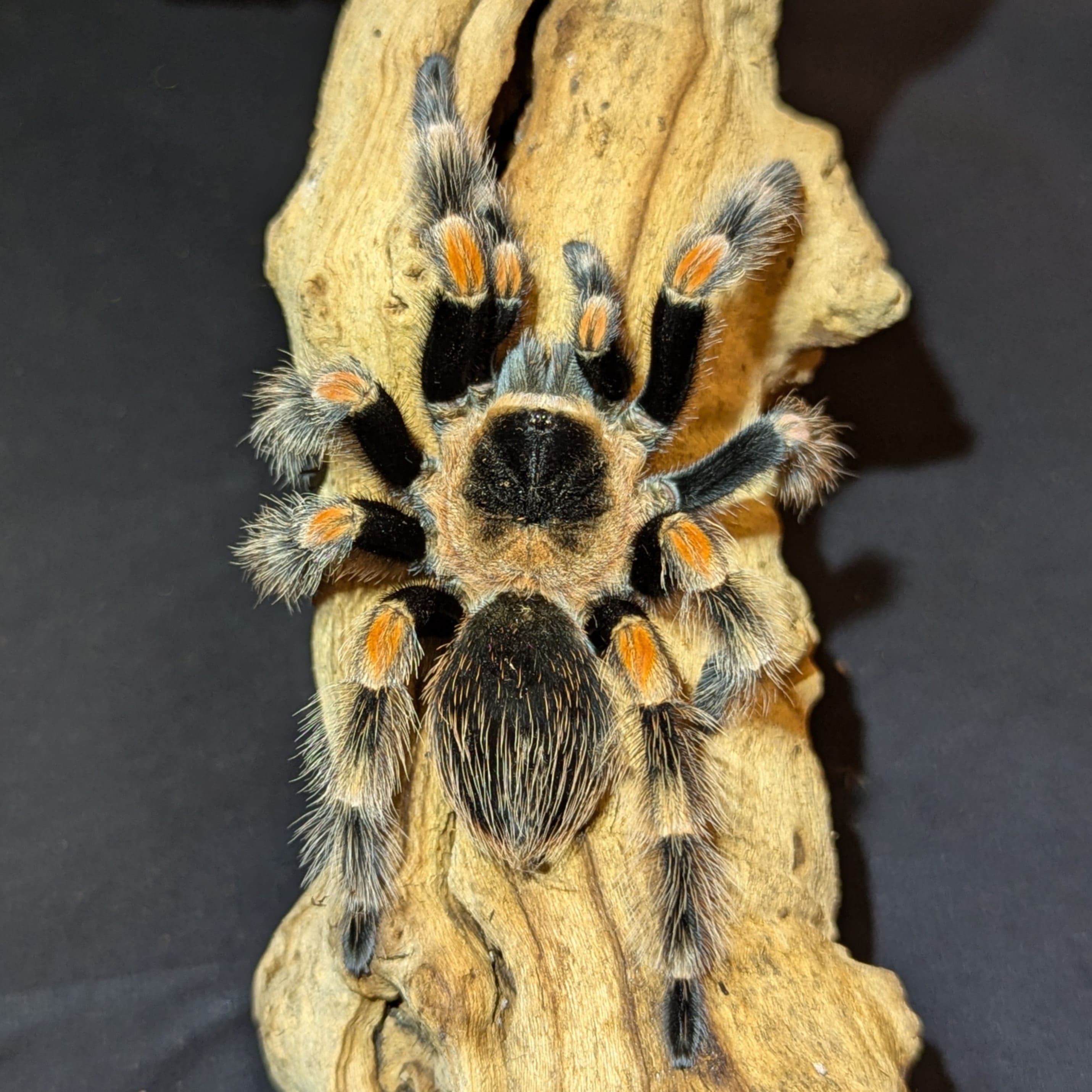Introduction
Tliltocatl albopilosus, commonly known as the Curly Hair Tarantula, is a hardy and docile species native to Central America. Named for its characteristic curly bristles, this tarantula is well-suited for beginners and appreciated by seasoned keepers for its calm temperament and ease of care.
Habitat Setup
A single adult should be kept in a horizontal enclosure at least three times its leg span in length and width, such as a 5 to 10-gallon tank. A deep substrate layer (3 to 5 inches) of coconut fiber, peat moss, or soil mix supports burrowing behavior. Temperatures should be maintained between 75-80°F with slight nighttime drops, and humidity should range from 65-70%. A shallow water dish and occasional misting help maintain moisture levels. Include a hide like cork bark or half logs and keep enclosure décor minimal to avoid stress.
Diet
Curly Hair Tarantulas thrive on a diet of live insects such as crickets, roaches, and the occasional mealworm. Juveniles should be fed every 3-4 days, while adults can be fed once or twice a week. Remove uneaten prey within 24 hours to prevent risk of injury.
Shedding Care
Molting is a crucial part of their growth. Signs of an impending molt include decreased activity, refusal to eat, and darkening of the exoskeleton. During and after molting, the tarantula should not be handled, and food should be withheld for several days to avoid injury. Maintain proper humidity to assist the process.
Female-Specific Care
Females are long-lived and may live 20 years or more in captivity. They may become more reclusive around molting and should be provided with a secure, undisturbed area during this time.
Handling and Temperament
Tliltocatl albopilosus is known for its gentle nature but should still be handled infrequently and with care. If threatened, it may flick urticating hairs. Always use slow movements and support the tarantula close to a soft surface to prevent injury from falls.
Health and Maintenance
This species is hardy and easy to maintain. Keep the enclosure clean by removing uneaten food and waste. A full substrate change may only be needed every 6 to 12 months. Avoid excessive humidity and provide good ventilation to prevent mold or mites.
Conclusion
Tliltocatl albopilosus makes an excellent pet tarantula for both new and experienced hobbyists. With basic care, a calm environment, and regular feeding, this species can live a long, low-maintenance, and fascinating life in captivity.




Leave a comment
This site is protected by hCaptcha and the hCaptcha Privacy Policy and Terms of Service apply.